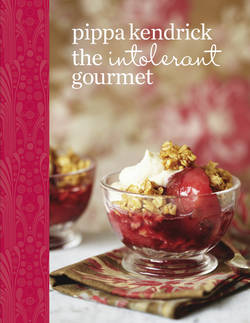Читать книгу The Intolerant Gourmet: Free-from Recipes for Everyone - Pippa Kendrick - Страница 6
ОглавлениеThe Intolerant Kitchen
The Intolerant Gourmet is all about the pleasure of eating – enjoying the delicious food you can have rather than craving the things you can’t. But before delving into the recipes, it is worth defining what constitutes a food allergy and what a food intolerance and how they differ.
A food allergy generally causes an immediate allergic reaction, which triggers an immune-system response and severe symptoms. There is also such a thing as a delayed allergic reaction to food, as in coeliac disease, for instance, in which the sufferer is allergic to the gluten in wheat. Intolerance, on the other hand, is an adverse reaction to a particular food or ingredient that occurs every time the food is eaten, but especially if larger quantities of it are consumed. It is much more common than an allergy and, although far less dangerous, symptoms can be similar and it can be no less difficult to live with. Food intolerance occurs when the body is unable to deal with a particular type of food, such as wheat, dairy products or egg. This is usually due to a combination of factors – the body not being able to produce enough of the particular chemical or enzyme needed for the digestion of that food and an over-exposure to the food in question.
Food intolerance can be triggered by ill-health (following serious illness, for instance, or an operation on the digestive system), but in most cases it is brought on by an over-exposure to a particular food or foods. In Britain, for example, we consume a huge amount of wheat grain on a daily basis, without even being aware of it. It is quite normal for an individual to eat a wheat-based cereal for breakfast, a sandwich of some type for lunch, followed by a pasta-based meal for supper. The result is a disproportionate amount of wheat consumption in one day, and if this is repeated over time, it can easily lead to an intolerance to wheat.
Intolerances are rarely life-threatening, but they do cause very real symptoms, from bloating and abdominal pain to rashes, headaches and even depression. Such symptoms can begin hours or even days after taking the food in question, making it difficult to diagnose the cause. As a result, sufferers can find themselves living in a state where they never feel wholly well. Indeed, this may have gone on for so long that it will have become an accepted part of their lives. They can’t remember a time when it was any better.
Once you have been diagnosed with a food allergy or intolerance, then you should of course try to avoid the problem food in all its guises. At the same time, it’s important to build up your reserves of vitamins, minerals and essential nutrients and to support your immune system as much as possible. Avoiding the problem food needn’t be a dismal business, however. You can buy a wide selection of products specially devised for sufferers from food intolerances and allergies, and some are worth their weight in gold in the kitchen. This cookbook uses a selection of the best, tried-and-tested products – for my list of recommended products and stockists. It also uses a range of allergen-free fresh produce to create recipes that are both rich in nutritional value and taste delicious.
Adopting an allergy- or intolerance-friendly diet does mean weaning yourself off all unnecessary processed and modified foods. When you can no longer rely on packets of biscuits or ready-made meals to fill a hole or provide an instant meal, learning to make the most of fresh wholefoods will make things much easier. Fruit, vegetables, pulses and meat – the foundation of good home cooking – are all intolerance-friendly foods, providing a great range of culinary options. The chapters in this book will encourage you to notice what’s in season, too, so that you begin to make seasonal eating a natural part of your diet.
